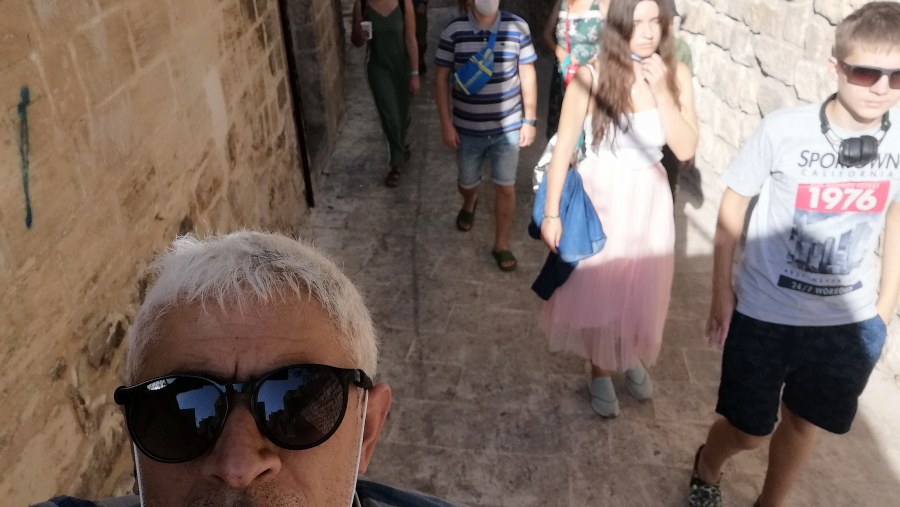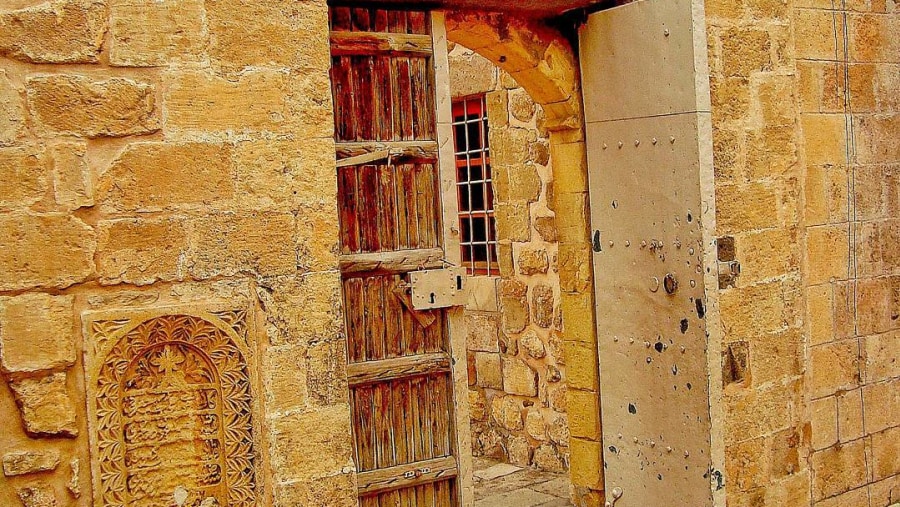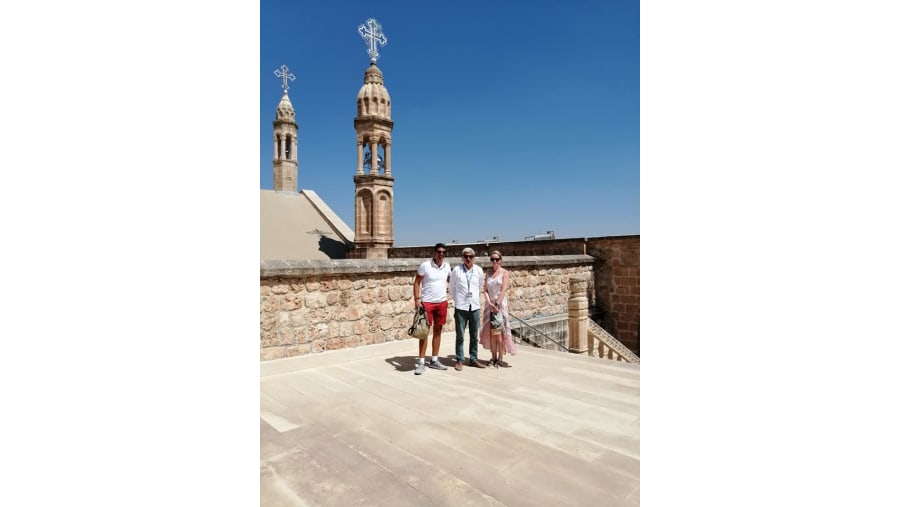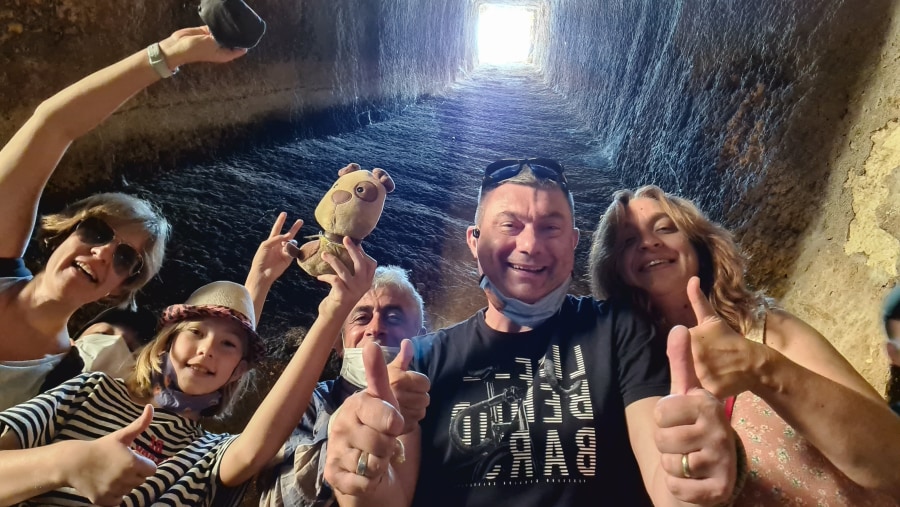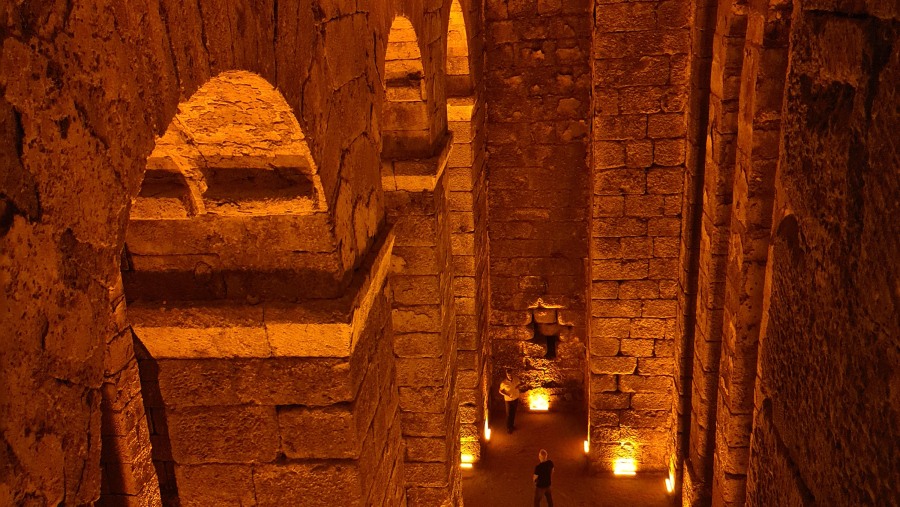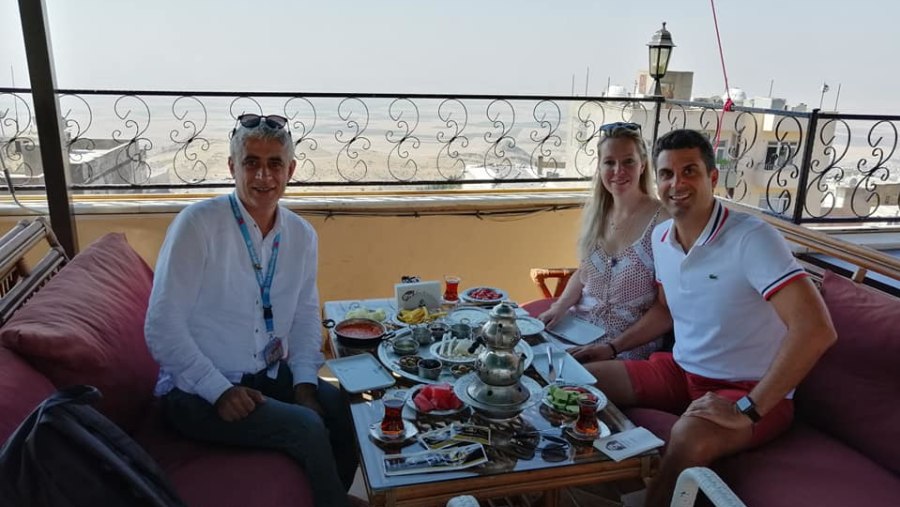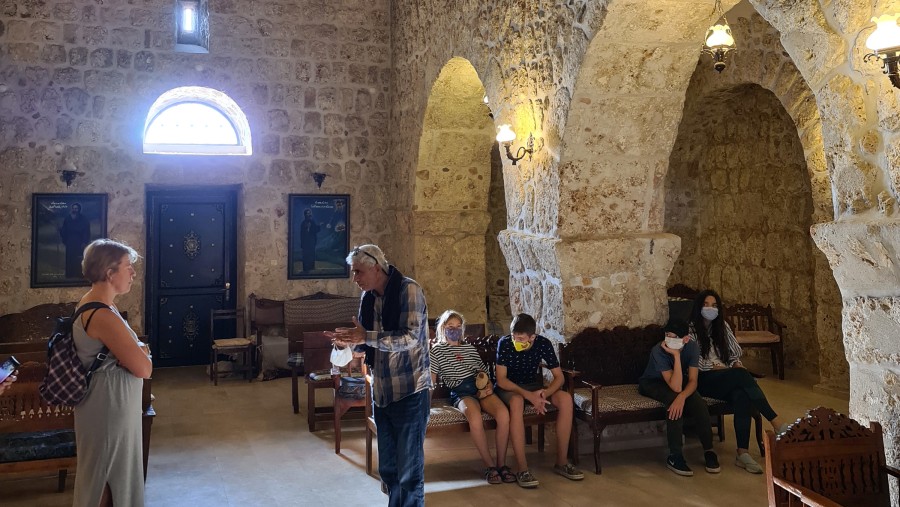Come To The Land Where Civilization Was Born
Description
Learn about the fertile crescent, Mesopotamia and Tur Abdin on this tour of Turkey. Go back in time with places such as Mor Gabriel Monastery, Monastery of Virgin Mary, Deyrulzafaran Monastery, ancient city of Dara, Grand Mosque and much more.
Itinerary Expand All Collapse All
-
Day 1: Tour of Mardin expand_more
Meet your tour guide in Mardin, and start your tour with the magnificent Kasımiye Madrasa, where you will see the Mesopotamian Plain.
Head to the next stop of the Church of Forty Martyrs (Kırklar Kilisesi), an outstanding Church of the Syriacs of the ancient community of the Fertile Crescent.
Visit the Zinciriye Madrasa, one of the most beautiful examples of the open courtyard madrasas of Anatolia.
Make the last visit of the day to the Grand Mosque of Mardin, which is the symbol of Mardin.
-
Day 2: Mardin - Midyat expand_more
Start the day by visiting the Deyrulzafaran Monastery, the most magnificent architecture monastery of modern Syriacs in the region.
Head to the next stop of the magnificent ancient city of Dara, which served as the Romans border outpost to the East.
Proceed to your next stop in the historic city of Nusaybin, which is very important for Eastern Christianity.
Visit the natural wonder of the Beyazsu river accompanying you between Midyat (Matiate) and Nusaybin (Nisibis). Take a break at the edge of this river, which brings abundance just like an oasis in the hot Mesopotamian lands formed by the merger of two streams called Beyazsu and Karasu, and discover its unique nature.
Visit the Kafro Tahtayto Pizzeria and village of Elbeğendi. If you want to eat natural pizza made by the Assyrians, one of the oldest peoples of the ancient Mesopotamian lands, with vegetables and ingredients entirely obtained from nature in the region of Tur Abdin, you are invited to this flavour feast.
-
Day 3: mardın expand_more
Visit the centre of Tur Abdin Region, which is the first settlement of Syriacs in the region today.
Visit the Mor Gabriel Monastery and the Virgin Mary Monastery.
Make the last stop by visiting Killit (dereiçi) village and churches and monasteries.
End of the tour.
What's Included
Airport pick-up & drop-off
Private boat tour
Museum tickets
What's Excluded
Meals
Accommodation
Flying tickets
Know before you go
Three days in the land where civilization was born: The fertile crescent, Mesopotamia and Tur Abdin.
Monastery of Virgin Mary in the Anıtlı village near Midyat Monastery of Virgin Mary (Meryem Ana Manastırı) with the beautiful church is located 30 kilometres east of Midyat in the Anıtlı village. The old name of this village is Hah which comes from the Aramaic language. Even at present, Anıtlı is a Christian village populated mainly by Assyrics (Süryani).
Mor Gabriel (Deyrulumur) Monastery is the oldest surviving Syriac Orthodox monastery in the world. It is located on the Tur Abdin plateau near Midyat. Mor Gabriel was founded in 397 by Mor Shem'un (Samuel) and his student Mor Shem'un (Simon). The monastery's importance grew, and by the 6th century, there were over 1000 local and Coptic monks there. The monastery became so famous that it received contributions from Roman Emperors, such as Arcadius, Honorius, Theodosius II and Anastasius. Between 615 and 1049, the Episcopal seat of Tur Abdin was based here, and from 1049 until 1915, the monastery had its diocese.
Midyat: Known as the place where orthodox established churches most in history, the historical ancient city Midyat is in the center of the Abdin (mountain of the servants) region. The old city is the centre of a centuries-old Hurrian town in Southeast-Turkey. In its long history, the city of Midyat has been ruled by various different leaders and nations. The foundation of this ancient city, famous for its grapes, midyat stone and history, goes back to 3000 BC.
Nusaybin: The School of Nisibis, for a time, absorbed into the School of Edessa, was an educational establishment in Nisibis (now Nusaybin, Turkey). It was an important spiritual centre of the early Church of the East; it is sometimes referred to as the world's first university. The school had three primary departments teaching: theology, philosophy and medicine. Its most famous teacher was Narsai, formerly head of the School of Edessa. The school was founded in 350 in Nisibis. In 363, when Nisibis fell to the Persians, St. Ephrem the Syrian, accompanied by a number of teachers, left the school. They went to the School of Edessa, where Ephrem took over the directorship of the school there. It had been founded as long ago as the 2nd century by the kings of the Abgar Dynasty. When Ephrem took over the school, its importance grew still further. After the Nestorian Schism, when the Byzantine emperor Zeno ordered the school closed for its teachings of Nestorian doctrine, deemed heretical by Chalcedonian Christianity, the School moved back to Nisibis. The church was built by Jacob of Nisibis between 313–320. It is considered as one of the oldest churches in Upper Mesopotamia. According to some inscriptions and texts, the church was built as the baptistery of a cathedral at that place. However, it was converted to a church after the cathedral and some other buildings were ruined.
Dara Ancient City: The eastern Roman Empire's last rally logistics and resistance point against the Sasanians in the east is the Tare Garrison. A unique 3-storey cemetery in the world, incredible gigantic cisterns, walls that make it easier to defend the tare, agora. In some sources, it is said that the place where Darius who was defeated by the great Iskender died and was named after the ancient city of Dara; in some sources, it was founded by the Armenian king Tridates. The Romans needed a garrison city in the east. After Anastasius, the emperor Justinian strengthened the city walls this time. General Belisarius, who incredibly resisted the siege of the Sasanians (Dara war) in 530 AD, went down in Roman history in golden letters.
Deyrulzafaran Monastery: The Za’faran, or Mar Hananya’s Monastery, is an ancient, spacious and well-built edifice. It is one of the greatest and famous monasteries of Beth Nahrin (Mesopotamia). It is built on a mound about 25 minute distance east of Mardin (Turkey). The monastery’s building measures 36 x 71 meters fortified by a strong wall. The monastery’s buildings are solid but not symmetrical because they were built at different times. They consist of two stories except those located in the southern part of the monastery, are of three stories. They are the best buildings of the monastery. The house rooms for the residence of patriarchs and cells for monks. Traces of its original edifices built with bricks and large carved stones are still visible in its temples and the ceilings of the lower story. Its exclusive buildings are the Church of Mar Hananya, the Church of the Sayyida (the Virgin Mary), the Church of the Patriarchal Throne, the Mausoleum (burial place) of the Fathers and the Paradise.
Grand Mosque of Mardin: One of the oldest mosques of Anatolia, it built by Artuqs (Mardin Artuqs), who were the first Anatolian principalities who leaned on the lands of civilization to Mesopotamia and back to the mountains of Izala. Artuqid Dynasty took place in history in 3 branches: Hasankeyf Artuqs, Harput Artuqs, and the longest life are the Mardin Artuqs. As can be clearly seen in his foundation, the mosque has two long minarets, one in the east and the other in the west. From the minarets, only the east has survived. The base of the minaret belongs to the original structure. Its body was renewed later. Since the minaret in the west does not exist today, this minaret must be in a place corresponding to the location of the eastern minaret. Although it is not known when the minaret was destroyed, sources write that the minaret was destroyed in 803/1400 during the occupation of Timur by Mardin. The square planned at the base of the existing minaret in the east is original. The shoe, body, honeycomb and cone parts belong to the next periods. The minaret was destroyed in 1304/1887 by a lightning strike. The minaret, whose repair was started in 1305/1888 with the help of philanthropists, was completed in 1306/1889 by an architect named Muhammedu'l-Fadıl.
Zinciriye Madrasa: It is a masterpiece that will fascinate you with its incredible stonework, which is the apple of the eye of the ancient city of Mardin and allows you to see the Mesopotamian plain with its magnificent view. Zinciriye Madrasa is one of the most beautiful historical sights in the old part of Mardin. It was built in 1385 by Melik Necmeddin Isa bin Muzaffer Davud bin El Melik Salih. He was the last sultan from the Artuqid Dynasty ruling in Mardin. The basic principles of the original Mardin architectural style were formed in the time of the Artuqids. The madrasa building covers a rectangular and large area in the bottom of the Mardin castle. It consists of a courtyard on two floors, mosque, tomb and various additional places.
Kasımiye (Sultan Kasım) is one of the most important historical buildings of Mardin. There are no inscriptions to give the date of construction. The construction of the madrasa was at the end of the Artuqid rule, perhaps the Zinciriye Madrasa. It was probably started by the same architect right after its construction, Timur. It was left unfinished due to the invasion and the Akkoyunlu pressure, and then perhaps the Akkoyunlu State. It was completed by Cihangir's son, Sultan, November 1457 – 1502. Incredible Mesopotamian scenery and an architectural masterpiece made of Mardin stone.
Mor Behnam (Kırklar Kilisesi) Church is one of the most significant historical sites in the old part of Mardin. It is located in the Şar neighbourhood of the city centre, where nowadays many Christians are still living. This church was constructed in 569 B.C and consecrated in honour of Syriac Saint Behnam and his sister Saro. While Mardin Castle is being repaired, one of the seven churches built is considered the part of the church belonging to the Shams (sun goddess) before the 6th century, indicating that it is dated. The bones of forty martyrs (Turkey/Sivas 4 century) in this church are from 1170 B.C. It was named because it was brought. Church with three entrance doors, fine stone crafted with crafting, altars, four-hundred-year-old wooden doors, 1500 years of root painting curtains, the bell tower in its vast courtyard and stone carving that is almost like lace there is a sofa with examples. Built in the name of Mor Behnam and his sister Saro and now known as the Forty Church, the church got both words from early Christian legends. The church, which also contains a Bible dating from 1230, is also the metropolitan church of Mardin.
Meeting Point
Mardin, Artuklu/Mardin, Turkey
Cancellation Policy
For cancellations upto 2 days before the tour -
Refund of 80% of the tour price.Price Details
| The group size and price | |
| 1 To 5 | EUR 2500 Per Group |
This is a group tour | |



